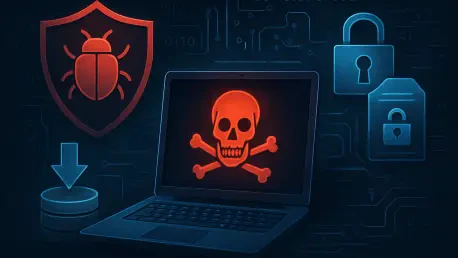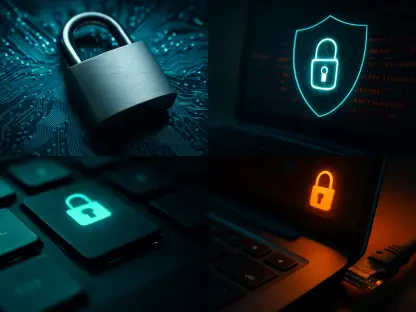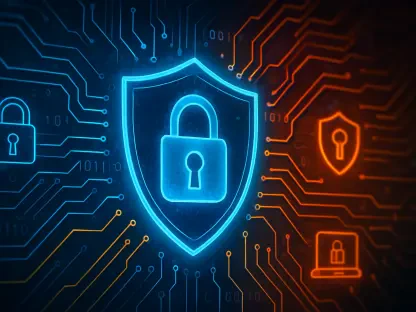Unveiling a Persistent Threat: Malware Reinfections on Cisco Devices
The cybersecurity landscape is facing a disturbing trend as reports emerge of hackers persistently reinstalling malware on unpatched Cisco devices, exploiting vulnerabilities that have lingered far too long. Australia’s Signals Directorate (ASD) has sounded the alarm about a specific implant known as BADCANDY, which attackers are deploying on systems running Cisco IOS XE software. This issue poses a severe risk to network security, as these devices often form the backbone of critical infrastructure in organizations worldwide, making them prime targets for malicious actors seeking to maintain long-term access.
The significance of this threat cannot be overstated, especially for IT administrators tasked with safeguarding sensitive data and ensuring operational continuity. With attackers demonstrating the ability to detect and counteract removal efforts, the challenge of securing these systems has become more complex. This guide aims to provide a comprehensive understanding of the malware reinstallation issue, detailing the nature of the exploited vulnerabilities, the sophisticated tactics employed by attackers, and the broader implications for cybersecurity practices in an interconnected world.
By exploring actionable steps and key insights, this resource seeks to equip network professionals with the knowledge needed to protect their Cisco infrastructure. The following sections will break down the root causes of these persistent infections, offer a step-by-step analysis of how hackers operate, and highlight critical strategies to mitigate risks. Staying informed and proactive is essential in combating such relentless cyber threats.
The Root of the Problem: Unpatched Cisco IOS XE Vulnerabilities
At the heart of this cybersecurity crisis lies a critical vulnerability in Cisco IOS XE software, identified as CVE-2023-20198, which carries a maximum CVSS score of 10.0, indicating its severe potential impact. This flaw, known to have been exploitable since at least 2018, resides in the web UI feature of the software, allowing attackers to execute arbitrary code and gain complete control over affected systems. Despite its long-standing presence, many devices remain unpatched, creating a fertile ground for exploitation by sophisticated threat actors.
The persistence of this vulnerability underscores a systemic challenge in cybersecurity: the delay in applying updates to critical systems. Groups such as the notorious Salt Typhoon gang have repeatedly targeted this flaw, leveraging it to compromise networks across various sectors. The ease with which attackers can exploit unpatched devices highlights the urgent need for organizations to prioritize patch management as a fundamental defense mechanism against such high-risk threats.
Failure to address this vulnerability not only jeopardizes individual systems but also risks cascading effects across interconnected networks. As long as devices running Cisco IOS XE software remain exposed without the necessary updates, they serve as entry points for malware like BADCANDY. Timely patching is not merely a recommendation but a critical step in breaking the cycle of exploitation and reinfection that continues to plague vulnerable infrastructure.
How Hackers Exploit and Reinstall Malware: A Step-by-Step Breakdown
Step 1: Identifying Vulnerable Cisco Devices
The first stage in the attack chain involves hackers scanning the internet for Cisco devices running IOS XE software susceptible to CVE-2023-20198. Using automated tools, attackers can quickly identify systems that have not been updated with the latest security patches. These tools enable rapid reconnaissance, allowing malicious actors to build a list of potential targets with minimal effort, often focusing on devices that are publicly accessible or poorly secured.
Targeting Exposed Web UI Features
Once vulnerable devices are identified, attackers zero in on the web UI feature of Cisco IOS XE software as their primary entry point. This component, designed for ease of management, becomes a critical weakness when left unpatched, enabling the execution of arbitrary code. By exploiting this flaw, hackers establish initial access, paving the way for deeper infiltration and control over the compromised system without immediate detection.
Step 2: Installing the BADCANDY Implant
After gaining access, attackers deploy the BADCANDY implant, a sophisticated piece of malware designed for persistent control over the infected device. This implant allows hackers to execute commands, exfiltrate data, and maintain a foothold within the network. Its deployment marks a significant escalation, as it transforms the device into a gateway for further malicious activities, often remaining active until manually removed or disrupted.
Ensuring Stealth and Persistence
To avoid detection, attackers employ advanced techniques to mask the presence of BADCANDY on compromised systems. By evading traditional security tools and blending malicious traffic with legitimate operations, they ensure the implant remains hidden for extended periods. Such stealth capabilities make it challenging for standard monitoring solutions to identify the infection, allowing hackers to operate undetected while planning subsequent actions.
Step 3: Detecting Removal and Re-Exploitation
According to findings from the ASD, attackers actively monitor infected Cisco devices to detect when BADCANDY is removed, often through actions like system reboots. When removal is detected, they swiftly re-exploit the same CVE-2023-20198 vulnerability to reinstall the malware, demonstrating a remarkable level of persistence. This cycle of reinfection underscores the inadequacy of temporary measures in addressing the root cause of the problem.
Why Reboots Alone Aren’t Enough
While rebooting an infected device can temporarily remove the BADCANDY implant, it fails to address the underlying vulnerability that allowed the initial compromise. Moreover, a reboot does not undo other malicious actions taken by attackers, such as data theft or configuration changes. Organizations must recognize that such interim solutions provide only fleeting relief and leave systems exposed to repeated exploitation.
Step 4: Escalating Attacks After Detection
Upon noticing removal attempts, attackers may escalate their efforts by deploying more aggressive tactics or additional malware variants to secure their access. This response often involves intensifying reconnaissance or exploiting other weaknesses within the network to maintain control. Such escalation can lead to broader compromise, affecting not just the targeted device but also interconnected systems and data repositories.
The Risk of Alerting Attackers
Taking defensive actions like rebooting may inadvertently signal to attackers that their presence has been detected, prompting a faster and more determined re-exploitation effort. This dynamic creates a cat-and-mouse game where temporary countermeasures can backfire, giving hackers an incentive to act swiftly. Understanding this risk emphasizes the importance of addressing vulnerabilities comprehensively rather than relying on short-term fixes.
Key Takeaways: Protecting Cisco Devices from Malware Reinfections
- Unpatched Cisco IOS XE devices remain prime targets for exploitation through CVE-2023-20198, posing a significant security risk.
- The BADCANDY malware can be reinstalled by attackers even after removal attempts such as system reboots, highlighting its persistent nature.
- Applying patches for CVE-2023-20198 is essential to prevent both initial infections and repeat attacks on vulnerable systems.
- Rebooting alone does not resolve the root vulnerability or reverse other malicious actions taken by threat actors during the compromise.
- Proactive monitoring and rapid response mechanisms are critical to detect reinfections and mitigate ongoing threats effectively.
Broader Implications: Cybersecurity Challenges in a Connected World
The persistent reinstallation of malware on Cisco devices reflects a troubling evolution in cybersecurity threats, where attackers, including nation-state actors and organized cybercriminal groups, demonstrate increasing sophistication. This issue is not isolated but part of a larger pattern of exploiting unpatched systems, as seen in other recent incidents like the supply chain attack on Omnissa’s endpoint management suite. Such events reveal how interconnected systems amplify the impact of vulnerabilities, creating widespread risks across industries.
Beyond specific exploits, the challenge of securing legacy devices adds another layer of complexity to the cybersecurity landscape. Many organizations struggle with outdated infrastructure that lacks modern security features or vendor support, making them easy targets for persistent threats. The sale of cyber exploits to adversarial entities, as evidenced by recent cases involving defense contractor insiders, further exacerbates the problem by arming hostile actors with powerful tools to exploit known flaws.
Looking ahead, addressing these systemic issues requires a multifaceted approach, including stronger collaboration between vendors and users to ensure timely updates and enhanced security education. The growing prevalence of insider threats and supply chain vulnerabilities signals a need for stricter controls and vigilance. As threats evolve, organizations must adapt by prioritizing resilience and preparedness to safeguard critical infrastructure against the relentless ingenuity of cybercriminals.
Final Call to Action: Secure Your Cisco Infrastructure Now
Reflecting on the persistent threat of malware reinstallations on unpatched Cisco devices, it becomes clear that the risks posed by vulnerabilities like CVE-2023-20198 demand urgent and decisive action. IT professionals and organizations must confront the reality that temporary measures, such as reboots, offer no lasting protection against determined attackers capable of reinfecting systems with implants like BADCANDY. The journey through understanding the tactics of exploitation underscores the critical importance of addressing root causes over superficial fixes.
Moving forward, the focus shifts to implementing robust strategies that go beyond immediate response. Prioritizing the application of patches for known vulnerabilities emerges as a non-negotiable step, alongside the establishment of continuous monitoring systems to detect suspicious activities early. Exploring advanced threat intelligence resources and fostering a culture of cybersecurity awareness within teams promises to strengthen defenses against evolving risks.
The path ahead calls for a thorough assessment of existing Cisco infrastructure to identify and remediate any lingering exposures. Engaging with vendor support for the latest security updates and best practices becomes an essential next step in fortifying networks. By taking these proactive measures, organizations position themselves to not only mitigate current threats but also build resilience against the sophisticated cyber challenges of tomorrow.









